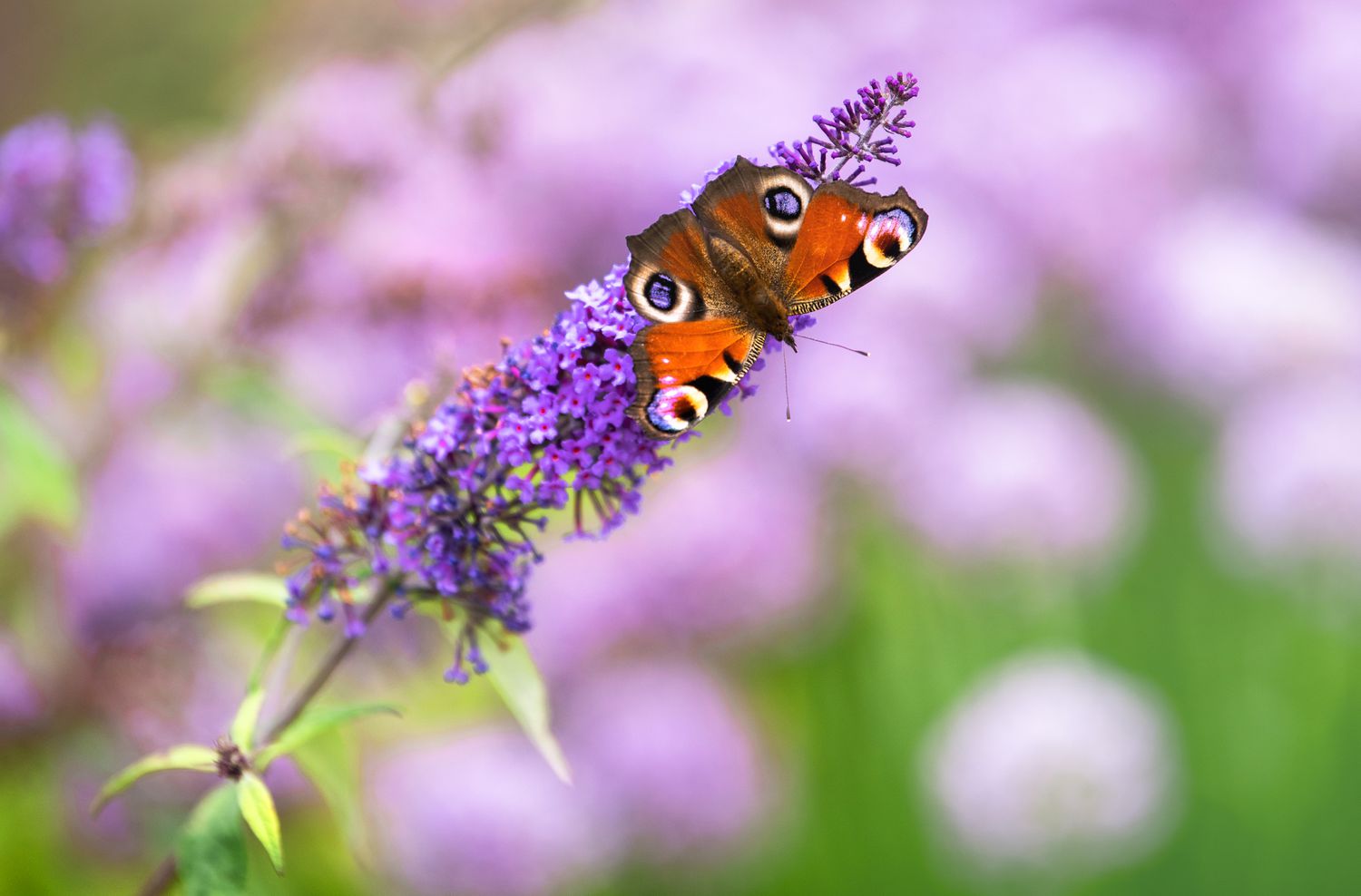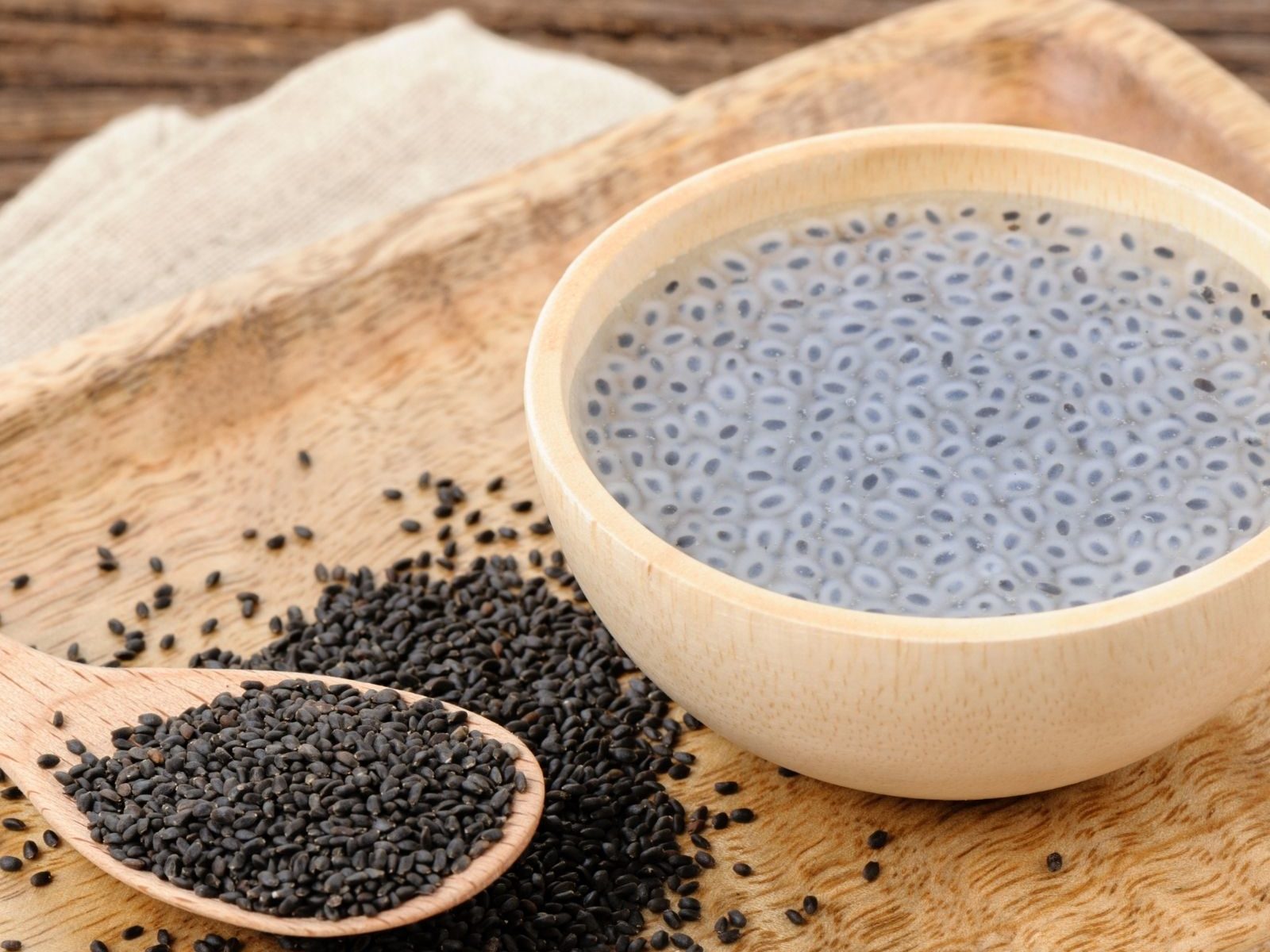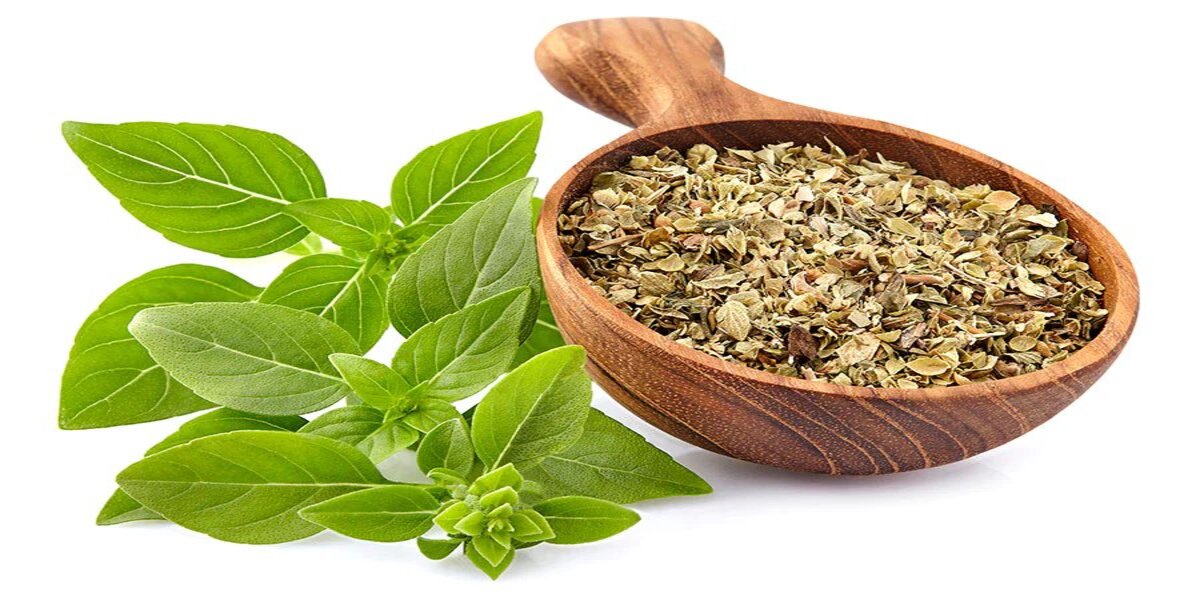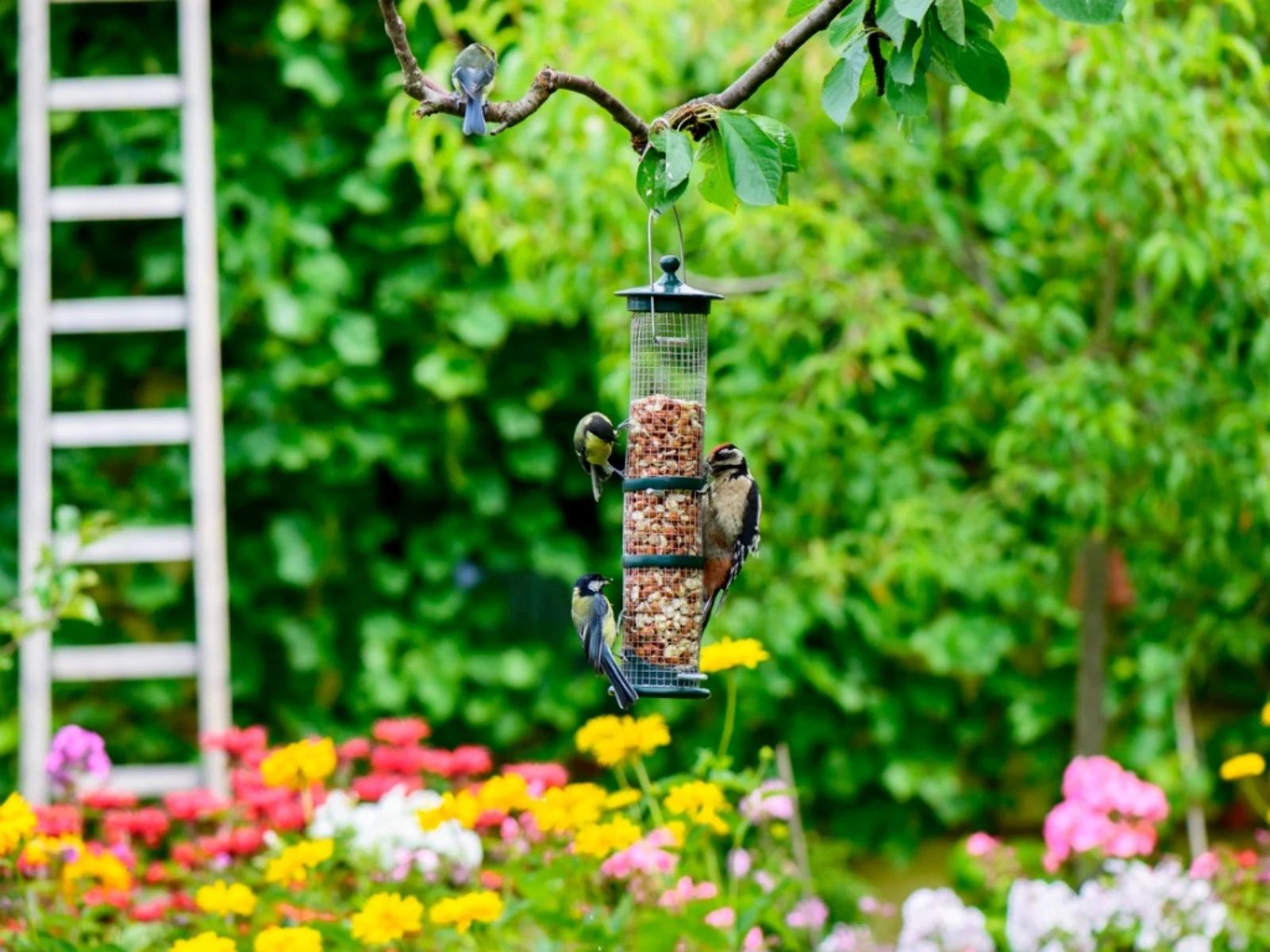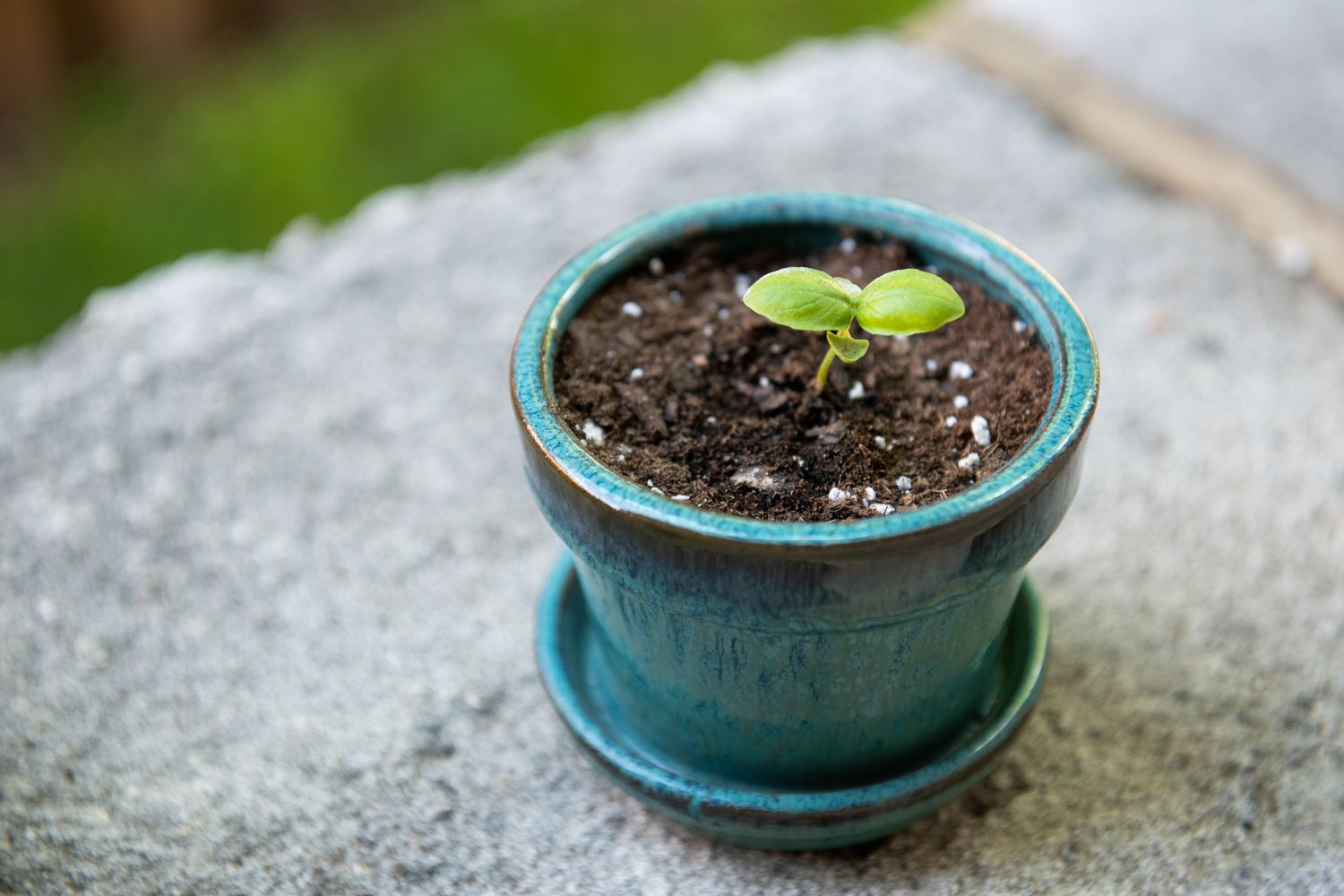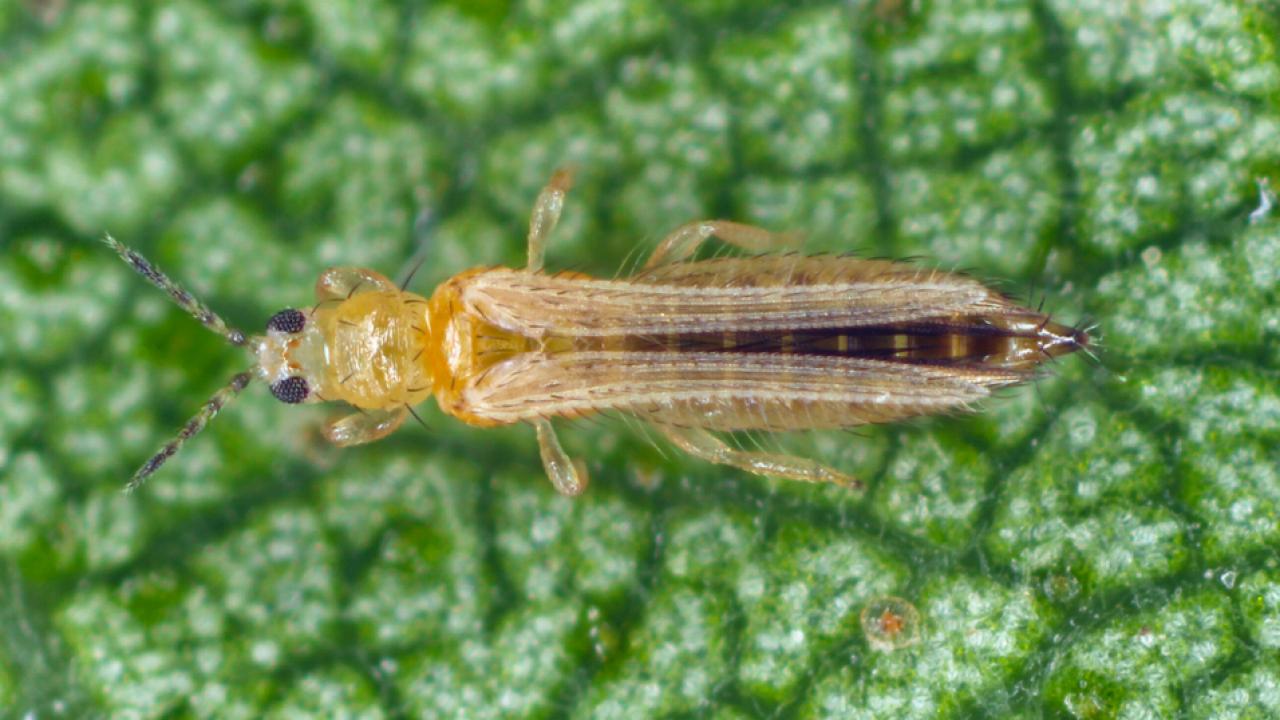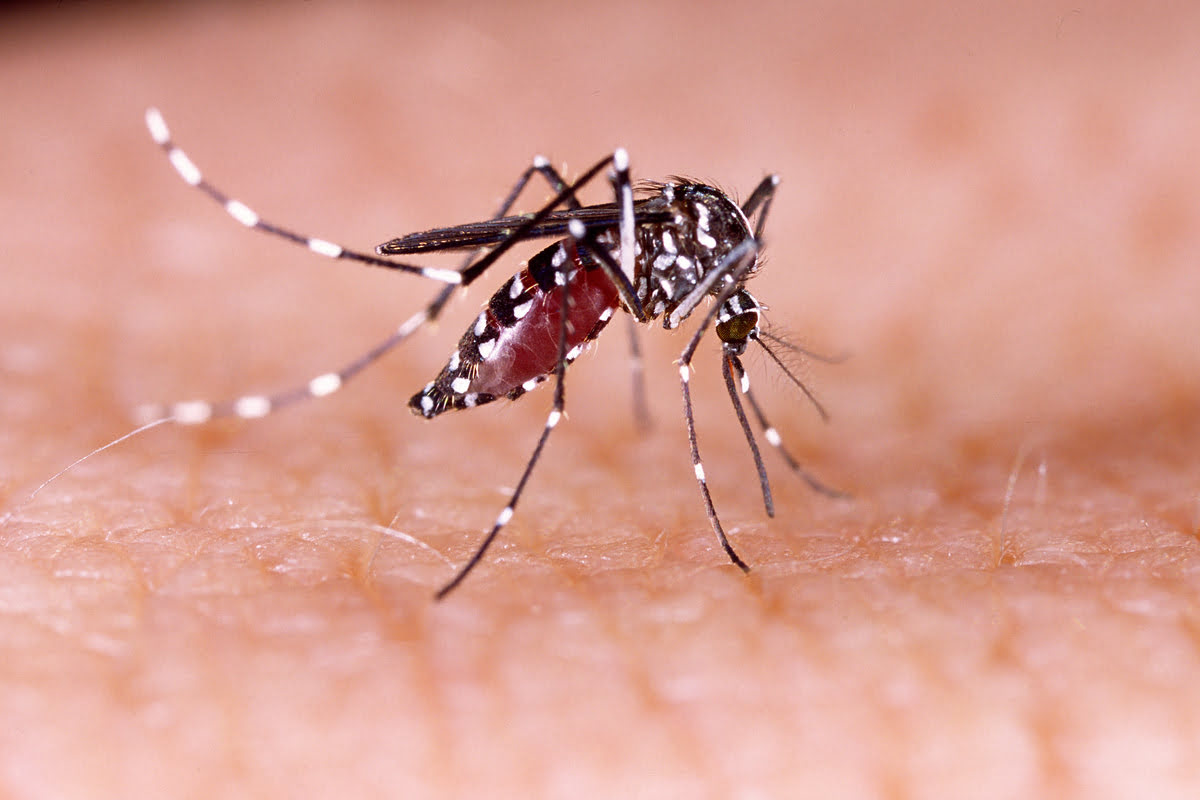Home>Gardening News and Trends>Latest News>What Insects Does Basil Attract
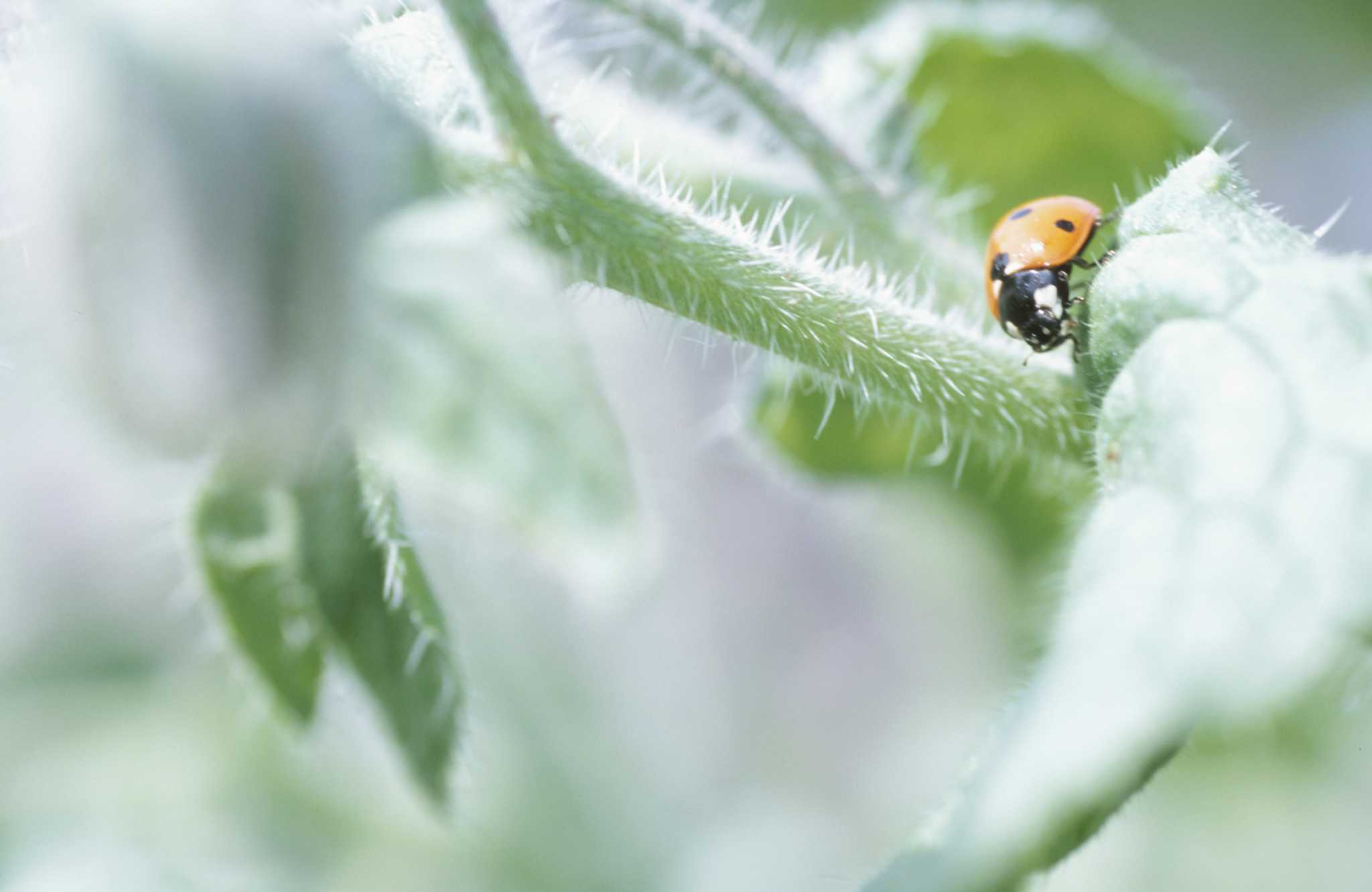

Latest News
What Insects Does Basil Attract
Modified: January 22, 2024
Discover the latest news on what insects basil attracts. Learn about the fascinating world of basil and the insects it attracts to your garden.
(Many of the links in this article redirect to a specific reviewed product. Your purchase of these products through affiliate links helps to generate commission for Chicagolandgardening.com, at no extra cost. Learn more)
Table of Contents
Introduction
Welcome to the world of basil gardening! Growing basil can be a rewarding and satisfying experience. Not only does it add a delightful aroma and flavor to your culinary creations, but it also offers a multitude of health benefits. However, have you ever considered the role that insects play in your basil garden? While some gardeners may view insects as pests to be eliminated, attracting certain types of insects can actually be beneficial for your basil plants.
Insects are essential pollinators and natural pest control agents, contributing to the overall health and productivity of your basil garden. By understanding which insects are attracted to basil and how they contribute to its well-being, you can create a thriving and vibrant garden ecosystem. In this article, we’ll explore the benefits of attracting insects to your basil garden, the common insects you may encounter, and how to encourage their presence.
So, whether you’re a seasoned gardener looking to boost your basil yield or a beginner green thumb eager to learn more about the fascinating world of insects, read on to discover the wonders that await you in your basil garden.
Benefits of Attracting Insects to Your Basil Garden
Attracting insects to your basil garden can offer numerous advantages for the health and productivity of your plants. Let’s explore some of the key benefits:
- Pollination: Insects, such as bees and butterflies, play a crucial role in pollinating basil flowers. Pollination is the process by which pollen is transferred from the male part of the flower to the female part, leading to the formation of seeds. With more pollinators visiting your basil plants, you can expect increased fruit set and a higher yield of aromatic leaves.
- Natural pest control: While some insects can be harmful to your basil plants, attracting beneficial insects, such as ladybugs and lacewings, can help keep pest populations in check. These predators feed on common garden pests like aphids and caterpillars, reducing the need for harmful pesticides and promoting a healthier, more sustainable garden ecosystem.
- Improved plant health: Insects contribute to the overall health and vigor of your basil plants. When insects visit the flowers, they inadvertently transfer pollen, stimulating the production of phytochemicals that enhance plant growth and defense mechanisms. Additionally, insect activity can improve soil aeration and nutrient cycling, creating a nutrient-rich environment for your basil to thrive.
- Biodiversity: Attracting a diverse range of insects to your basil garden promotes biodiversity in your outdoor space. A variety of insect species means a more balanced ecosystem, as different insects fulfill specific roles in the food chain. This biodiversity can have positive cascading effects, benefitting other plants and wildlife in your garden.
- Aesthetic appeal: Insects bring life and movement to your garden. The sight of colorful butterflies fluttering around your basil plants or bees meandering from flower to flower is not only fascinating but also adds visual beauty to your outdoor space. Enjoy the delightful sight of nature’s pollinators as you tend to your basil garden.
By intentionally attracting insects to your basil garden, you can harness the power of nature to create a thriving and harmonious ecosystem. Not only will your basil plants benefit from increased pollination and pest control, but you’ll also enjoy the sight of these fascinating creatures as they go about their essential work. So, let’s explore the insects you’re likely to encounter in your basil garden and discover how they contribute to your plants’ well-being.
Common Insects Attracted to Basil
When you create an inviting environment in your basil garden, you’ll notice a wide range of insects making their presence known. These insects play important roles in the ecosystem of your garden. Let’s take a closer look at some of the common insects you may encounter:
- Bees: Bees are excellent pollinators and are essential for the reproduction of basil plants. They are attracted to the flowers of basil and help transfer pollen from one flower to another, promoting fruit set and ensuring a bountiful harvest.
- Butterflies: Delicate and beautiful, butterflies not only add a touch of grace to your garden but also serve as valuable pollinators for basil. These winged wonders are drawn to the bright colors and nectar-rich flowers, making them frequent visitors to your basil plants.
- Ladybugs: Known as nature’s pest control, ladybugs are beneficial insects that feed on aphids, mites, and other common basil pests. Their voracious appetite for pests helps keep harmful populations in check, reducing the need for chemical interventions.
- Lacewings: Lacewings are another valuable asset in your basil garden. Both the larvae and adult lacewings feed on aphids, whiteflies, and small caterpillars, offering a natural and effective means of pest control.
- Hoverflies: Hoverflies, also known as flower flies, are excellent pollinators for basil. They are often mistaken for bees due to their similar appearance but do not possess stingers. These helpful insects also prey on aphids and other small pests.
- Bumblebees: Bumblebees are larger and fuzzier than honeybees and are known for their efficient pollination abilities. These industrious workers visit basil flowers, ensuring the transfer of pollen and facilitating fruit production.
- Praying mantis: While they may appear intimidating, praying mantises are actually beneficial insects in the garden. They are skilled predators, feeding on garden pests like caterpillars, beetles, and even small rodents.
- Ants: Although ants can sometimes be a nuisance in the garden, they play a role in pollinating basil flowers. While they are not as effective as bees or butterflies, they can help with the transfer of pollen.
These are just a few examples of the diverse range of insects that may visit your basil garden. Each insect has its unique contribution to the ecosystem, whether it’s pollination, pest control, or soil health. Creating an environment that attracts these beneficial insects will ensure a thriving and balanced basil garden.
Role of Insects in Basil Plant Health
Insects play a vital role in maintaining the health and well-being of your basil plants. From pollination to pest control, these tiny creatures contribute in various ways. Let’s explore the different roles insects play in the overall health of your basil garden:
- Pollination: Basil plants produce flowers that require pollination to set seeds. Insects like bees, butterflies, and hoverflies are attracted to the nectar and pollen-rich flowers. As they move from flower to flower, they inadvertently transfer pollen, ensuring fertilization and seed development. Without proper pollination, your basil plants may produce fewer seeds and have reduced overall vigor.
- Pest control: Many insects are natural predators, feeding on common garden pests that can affect the health of your basil plants. For instance, ladybugs and lacewings devour aphids, which can weaken basil plants by sucking sap from leaves. Praying mantises, with their voracious appetites, feast on beetles, caterpillars, and other harmful insects. By attracting these beneficial insects, you can minimize damage caused by pests and reduce the need for chemical pesticides.
- Nutrient cycling: Some insects, like ants and beetles, help with the breakdown of organic matter in the soil. They burrow, dig, and feed on decaying plant material, accelerating the decomposition process and improving soil structure. This aids in nutrient cycling, making essential nutrients more readily available to your basil plants’ roots.
- Soil aeration: Insects that burrow in the soil, such as earthworms, improve soil aeration. Their movement creates tunnels that allow air, water, and nutrients to penetrate deeper into the soil, promoting root growth and overall plant health. Adequate soil aeration is crucial for basil plants to access nutrients and maintain healthy root systems.
- Promoting biodiversity: Insects contribute to the overall biodiversity of your basil garden. By attracting a diverse range of insects, you create a balanced ecosystem. Each insect species plays a unique role in the food web, sustaining a healthy and harmonious environment. This biodiversity extends beyond just insects and can attract other wildlife, such as birds and beneficial reptiles, further enriching your garden ecosystem.
By understanding and appreciating the role of insects in your basil garden, you can work with nature to create an environment that supports the health and vitality of your plants. Attracting pollinators, fostering natural pest control, and promoting nutrient cycling and soil aeration all contribute to robust and thriving basil plants. So, let’s explore how you can encourage these beneficial insects to visit your basil garden.
How to Encourage Insect Visitors to Your Basil Garden
Creating a welcoming environment for insects is key to attracting them to your basil garden. By implementing a few simple strategies, you can encourage these beneficial visitors. Here are some tips to help you make your basil garden an irresistible haven for insects:
- Plant diverse flowers: Incorporate a variety of flowering plants alongside your basil. Different insect species are attracted to different flowers, so by providing a diverse array of colors, shapes, and nectar sources, you’ll attract a wider range of beneficial insects.
- Choose native plants: Including native plants in your garden is a great way to attract local insect species. Native plants have evolved alongside local insects and are often better suited to provide the necessary resources, such as nectar and pollen, that insects rely on.
- Avoid pesticides: Chemical pesticides can harm or deter beneficial insects. Opt for natural pest control methods or use pesticides sparingly and strategically, targeting only specific pest problems. This allows the beneficial insects to thrive while still managing harmful pests.
- Provide water sources: Insects need water, especially during hot and dry periods. Create small shallow dishes or install a birdbath with rocks or pebbles for them to perch on. Include water sources near your basil plants to entice thirsty visitors.
- Include host plants: Some insects, like butterflies, have specific host plants on which they lay their eggs and feed their larvae. Research which plants serve as hosts for the insects you wish to attract and include them in your garden alongside your basil.
- Use companion planting: Take advantage of companion planting by intermixing basil with other plants that naturally repel pests or attract beneficial insects. For example, marigolds repel aphids and nematodes, while yarrow attracts beneficial wasps and hoverflies.
- Provide shelter: Create habitats for insects to seek refuge. Add mulch, rocks, or log piles that offer hiding places and shelter from harsh weather conditions. These shelters also double as overwintering sites for beneficial insects.
- Practice organic gardening: Organic gardening methods prioritize the use of natural fertilizers and pest control measures, which are less harmful to beneficial insects. Avoid synthetic fertilizers and consider using compost for organic matter and natural pest repellents like neem oil.
- Monitor and adapt: Regularly monitor your garden for pest outbreaks and signs of beneficial insects. Adjust your gardening practices accordingly to support the thriving population of beneficial insects while managing pest issues effectively.
With these strategies in place, you can create an inviting habitat that attracts and supports beneficial insects in your basil garden. By providing the necessary resources and minimizing harmful interventions, you’ll create a healthy and balanced ecosystem for both your basil plants and their insect allies.
Tips for Creating an Insect-Friendly Basil Garden
To create an optimal environment for attracting and supporting beneficial insects in your basil garden, consider implementing these tips:
- Plant in the right location: Basil plants thrive in full sun. Choose a location that receives at least six hours of direct sunlight per day to ensure healthy growth and vibrant blooms that attract insects.
- Provide a variety of basil cultivars: Different basil cultivars have different flower types and scents, which can attract a wider range of insects. Plant a mix of cultivars such as Sweet Basil, Thai Basil, and Purple Basil to diversify the floral offerings in your garden.
- Practice proper watering: Water your basil plants deeply and evenly, keeping the soil consistently moist but not waterlogged. Insects are attracted to well-hydrated plants, and proper watering also helps maintain plant health.
- Encourage natural mulching: Apply a layer of organic mulch, such as wood chips or straw, around your basil plants. This helps retain soil moisture, regulate soil temperature, and provide a favorable habitat for beneficial insects.
- Allow some flowering: Many gardeners pinch off basil flowers to encourage leaf production. However, allowing some flowers to bloom can attract pollinators and provide nectar for beneficial insects. Strike a balance between harvesting leaves and allowing a few flowers to flourish.
- Practice companion planting: Surround your basil plants with companion plants known to attract beneficial insects. Some suitable options include marigolds, dill, fennel, and calendula. These companion plants act as magnets, luring in helpful bugs to your garden.
- Rotate your crops: Avoid planting basil or other related herbs in the same spot year after year. Crop rotation minimizes pest and disease issues, benefiting both your basil plants and the insects that rely on them.
- Practice regular maintenance: Regularly inspect your basil plants for pests and remove any affected leaves or plants promptly. This prevents pest populations from getting out of control and maintains a healthy environment for beneficial insects.
- Leave some areas undisturbed: Create small patches or corners in your garden that are left untouched. This provides undisturbed habitats and nesting areas for beneficial insects, encouraging them to stay and thrive in your garden.
- Be patient and observe: It takes time for beneficial insects to find your garden and establish themselves. Be patient and observe the changes happening in your basil garden as insects begin to visit and contribute to its overall health and productivity.
By applying these tips, you can create an insect-friendly basil garden that not only provides a bountiful harvest of aromatic leaves but also supports a thriving ecosystem of beneficial insects. Embrace the beauty of nature and the vital role these insects play in the health and vitality of your basil plants.
Conclusion
Creating an insect-friendly basil garden is not only beneficial for your plants but also a fascinating way to connect with nature and foster a harmonious ecosystem. By understanding the importance of attracting beneficial insects, such as bees, butterflies, ladybugs, and lacewings, you can enhance the health and productivity of your basil plants.
From pollination to natural pest control and soil health, insects play diverse and critical roles in maintaining the well-being of your basil garden. By implementing strategies like planting diverse flowers, providing water sources, and practicing organic gardening, you can create an inviting habitat that attracts beneficial insects and supports their populations.
Remember, it’s essential to strike a balance between attracting beneficial insects and managing pest issues. Avoid the use of harmful chemicals that can disrupt the delicate ecosystem you’ve created. Instead, focus on natural pest control methods and regular observation to monitor and adapt to the needs of your garden.
As you embark on this journey of creating an insect-friendly basil garden, embrace the wonders of nature that unfold before you. Enjoy the sight of bees buzzing, butterflies dancing, and ladybugs patrolling your plants. Witness the power of these tiny creatures as they contribute to the health, beauty, and productivity of your basil garden.
So, what are you waiting for? Start implementing these tips, watch as the insects become your gardening allies, and savor the rewards of a thriving basil garden for years to come.
